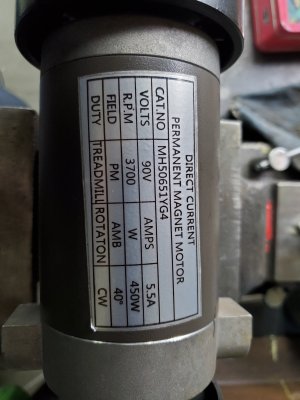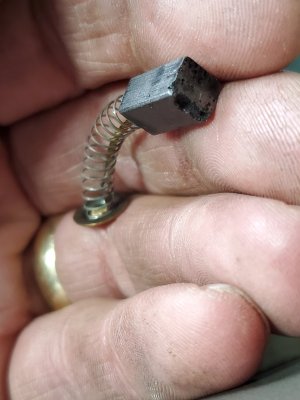-
Scam Alert. Members are reminded to NOT send money to buy anything. Don't buy things remote and have it shipped - go get it yourself, pay in person, and take your equipment with you. Scammers have burned people on this forum. Urgency, secrecy, excuses, selling for friend, newish members, FUD, are RED FLAGS. A video conference call is not adequate assurance. Face to face interactions are required. Please report suspicions to the forum admins. Stay Safe - anyone can get scammed.
-
Several Regions have held meetups already, but others are being planned or are evaluating the interest. The Calgary Area Meetup is set for Saturday July 12th at 10am. The signup thread is here! Arbutus has also explored interest in a Fraser Valley meetup but it seems members either missed his thread or had other plans. Let him know if you are interested in a meetup later in the year by posting here! Slowpoke is trying to pull together an Ottawa area meetup later this summer. No date has been selected yet, so let him know if you are interested here! We are not aware of any other meetups being planned this year. If you are interested in doing something in your area, let everyone know and make it happen! Meetups are a great way to make new machining friends and get hands on help in your area. Don’t be shy, sign up and come, or plan your own meetup!
You are using an out of date browser. It may not display this or other websites correctly.
You should upgrade or use an alternative browser.
You should upgrade or use an alternative browser.
DC motor controllers
- Thread starter DPittman
- Start date
DPittman
Ultra Member
As you can see the brushes are less than ideal but seem okay with low 12volt voltage?Put a 100 watt (minimum) 120VAC filament light bulb in place of the motor. If it lights up the board is OK.
very odd. can you post a photo of the motor nameplate?
Attachments
VicHobbyGuy
Ultra Member
If the bulb lights up and you can control the brightness with the pot would be the next step.Put a 100 watt (minimum) 120VAC filament light bulb in place of the motor. If it lights up the board is OK.
Did you put a fast blow fuse (15A?) in the AC line and DC line to the motor? And the pot wiper was connected to P2? And the 'Horsepower resistor' is the correct value?
It's interestng that your controller is labelled KBLC, not KBIC.
Last edited:
If the lightbulb lit, then the controller is probably working. These controllers tend to be all or nothing. Does the pot work to adjust the lightbulb brightness?
Having the lightbulb presents a steady load on the controller. Without the bulb, if the motor is arcing the load is fluctuating and might be confusing the controller.
Do you have the correct HP resistor?
Having the lightbulb presents a steady load on the controller. Without the bulb, if the motor is arcing the load is fluctuating and might be confusing the controller.
Do you have the correct HP resistor?
DPittman
Ultra Member
I "think" I have the right hpIf the lightbulb lit, then the controller is probably working. These controllers tend to be all or nothing. Does the pot work to adjust the lightbulb brightness?
Having the lightbulb presents a steady load on the controller. Without the bulb, if the motor is arcing the load is fluctuating and might be confusing the controller.
Do you have the correct HP resistor?
Yes the pot works welll to adjust bulb brightness.
The brush springs seem fine to me.
that’s itSo does this look right for parallel wiring? Alligator wires on left will go to A+ and A- on the board and the red wire on the right goes to motor motor positive and the left black goes motor negative.View attachment 22114
VicHobbyGuy
Ultra Member
If it were my experiment, I'd put the bulb in series with the motor to act as a current limiter. Or put the bulb in the AC line to limit current there.
Also, I'd definitely add those fuses to the system.
Are there green /red LEDs on the board as mentioned in the manual?
Also, I'd definitely add those fuses to the system.
Are there green /red LEDs on the board as mentioned in the manual?
VicHobbyGuy
Ultra Member
Yes, that looks about right for the resistor. Check that the CL (current limiter) pot is in the mid-point of its adjustment range, too.I "think" I have the right hp resistor as it is supposed to be right for my 3/4 hp lathe motor. Pic attached.
from expensive experience, these controllers really dislike intermittent loads. Page 13 of the manual. Open armature wiring causes immediate release of the magic smoke. That’s why I suggest in parallel.If it were my experiment, I'd put the bulb in series with the motor to act as a current limiter. Or put the bulb in the AC line to limit current there.
Also, I'd definitely add those fuses to the system.
Are there green /red LEDs on the board as mentioned in the manual?
VicHobbyGuy
Ultra Member
There's still a fair bit of carbon left on the brush in the picture, so you could use sandpaper around a dowel to sand back to a smooth curve. I've done that. Also, I have had a situation where that spring decided to just coil up in the passage and not press the brush down effectively. I'd try to have a look at the commutator if there was an easy way to do that, sometimes they get a dirty film which affects the contact.I'll see if I can find new brushes.
DPittman
Ultra Member
Thanks for those suggestions. Yes the commutator does definitely have a film on it but not much wear.There's still a fair bit of carbon left on the brush in the picture, so you could use sandpaper around a dowel to sand back to a smooth curve. I've done that. Also, I have had a situation where that spring decided to just coil up in the passage and not press the brush down effectively. I'd try to have a look at the commutator if there was an easy way to do that, sometimes they get a dirty film which affects the contact.


